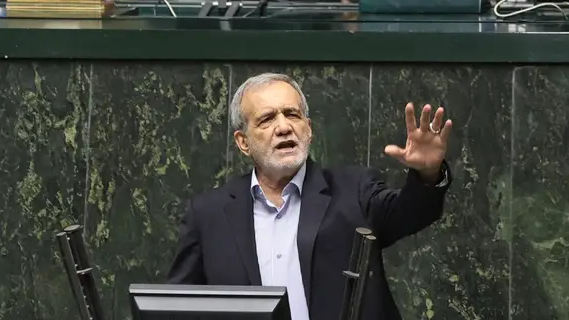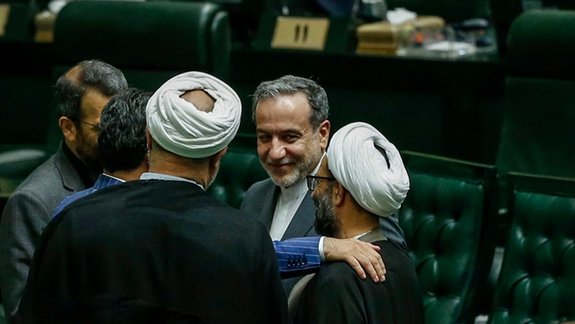Iran's state debt to the banking system has surged by 138% over the past three years, reaching 15,600 trillion rials (approximately $32 billion at the official exchange rate and $26 billion at the open market rate), according to Central Bank statistics.
During his presidential campaign, Ebrahim Raisi—who died in a helicopter crash on May 19, 2024—had pledged not to borrow from the country's banking system. However, Central Bank data reveals that government borrowing from banks nearly doubled, increasing 2.5 times since Raisi assumed office in August 2021.
Raisi administration officials repeatedly claimed that the administration ceased borrowing from the Central Bank. However, statistics from the institution show that government debt to the Central Bank has not only continued but surged by 72% year-on-year as of June 2024 in the last year of his presidency.
In addition, the government has intensified its indirect borrowing from the Central Bank. This approach involves the Central Bank providing substantial loans to domestic banks, enabling the government to borrow extensively from these institutions alongside its direct borrowing.
For example, borrowing by domestic banks from the Central Bank in June 2024 was 2.7 times higher than in the same month the previous year and nearly 5.5 times higher compared to when President Raisi's administration took office.
During this period, the Central Bank lent 5,440 trillion rials (approximately $9 billion at the open market exchange rate) to the country’s banks, which then loaned 6,260 trillion rials to the government.
The potential consequences remain uncertain, especially given that the Iranian rial has lost more than half of its value over the past three years. The cycle of loans between the Central Bank and domestic banks, eventually funneling to the government, could have significant repercussions. A substantial portion of the funds received by the government has effectively diminished in value due to the severe devaluation of the rial during this period.
Moreover, seven of Iran's major banks have collectively accumulated losses totaling 4,600 trillion rials, casting doubt on their future stability.
In summary, despite the Raisi administration's pledge to avoid borrowing, the government has taken out loans exceeding 9,000 trillion rials from the Central Bank and other domestic banks over the past three years. Most of this borrowing was done directly by the government, with the remainder undertaken by state-owned companies and organizations.
The primary driver of this extensive borrowing is the persistent and severe budget deficit. While the Central Bank has stopped publishing reports on the government’s budget performance since June 2022, its latest available data indicates that in the first year of Raisi’s presidency, the government faced an operational deficit of approximately 4,730 trillion rials ($8 billion). Even after accounting for the sale of capital assets, the budget deficit remained at 2,160 trillion rials ($3.6 billion).
The government's reliance on borrowing to cover budget deficits is not unique to the Raisi administration; it has been a common practice since the imposition of U.S. sanctions in 2018, dating back to President Hassan Rouhani's tenure.
Liquidity and Inflation
The extensive borrowing in recent years has resulted in a staggering liquidity level of 83,540 trillion rials (approximately $139 billion at the open market exchange rate), which has doubled since 2021. This surge in liquidity has contributed to an annual inflation rate exceeding 40% in Iran in recent years.
It’s important to note that only a few countries worldwide experience such high and persistent inflation. For context, the global average inflation rate last year was 6.8%, while Iran’s was 41.5%. The relatively high global inflation rate is largely attributed to Russia’s invasion of Ukraine and ongoing tensions in the Middle East; otherwise, it has typically hovered around 3% in previous years. The International Monetary Fund (IMF) forecasts global inflation to decrease to 4.5% next year, while Iran's inflation is projected to remain high at 32.5%.
Additionally, the National Development Fund of Iran reports that the government has borrowed $100 billion from this institution and is currently unable to repay it. The total debt owed by the government to banks and the National Development Fund now amounts to three years' worth of the government's general budget, with no clear plan for how these debts will be settled.
Beyond these borrowings, the government also owes significant amounts to private companies across various sectors, including construction, pharmaceuticals, private electricity plant owners, and wheat farmers.
According to the Central Bank's report, the Raisi administration has managed to settle approximately $4.5 billion in external debt. As of June this year, Iran's foreign debt stands at around $4.363 billion, with commitments to repay $2 billion of this debt in the short term and the remainder in the medium term.














